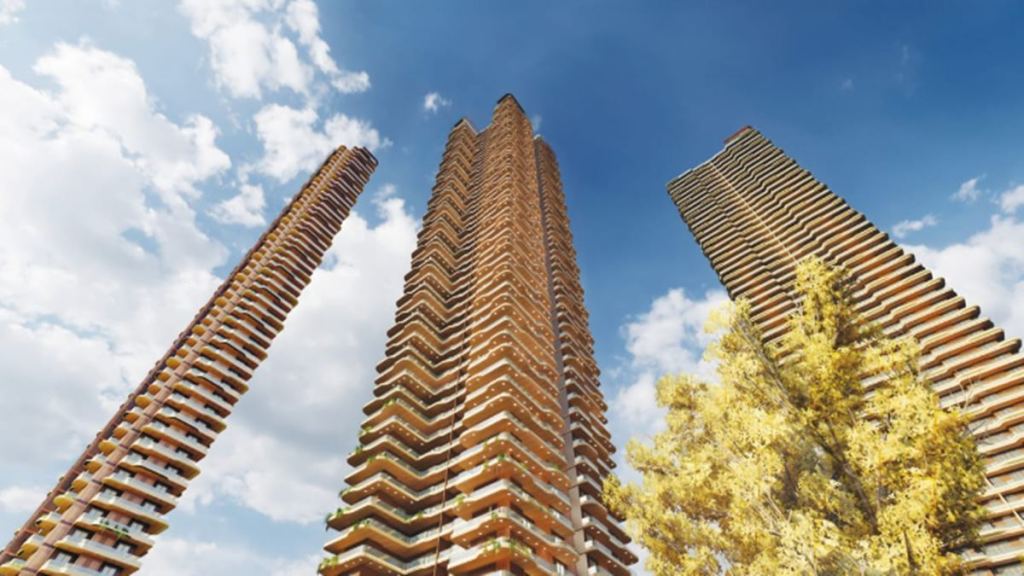Increasing environmental awareness and drastic climate changes, in recent times, have encouraged affluent buyers to prioritize eco-friendly features in their luxury homes. Government regulations and initiatives are also playing a significant role, says Neeraj K Mishra, Executive Director, Ganga Realty.
In an exclusive interview with Sanjeev Sinha, Mr Mishra expresses his perspective on the significance of sustainability as a central element in contemporary luxury projects, as well as the role of artificial intelligence in enhancing project efficiency and minimizing environmental impact. Excerpts:
Sustainability has become the centerpiece or attraction point for luxury projects in Gurugram significantly. Why do you think that’s the case?
Sustainability is not a selling point; for us, it’s a wholesome value system that our projects are a mirror of. However, I agree with your analysis that it has emerged as a cornerstone of luxury projects in Gurugram due to an amalgam of many factors. Increasing environmental awareness and drastic climate changes, in recent times, have encouraged affluent buyers to prioritize eco-friendly features in their luxury homes. Government regulations and initiatives, such as Gurugram’s green building norms, have also played a significant role. Moreover, luxury buyers now seek spaces that promote health and wellness, and sustainable features like natural ventilation, green spaces, and non-toxic materials have become essential. Sustainability has become a status symbol, distinguishing luxury projects and reflecting owners’ social responsibility. Additionally, eco-friendly buildings retain value and appreciation over time, appealing to investors.
Innovative sustainable design has also become a common sight in luxury, blending high-end aesthetics with environmental responsibility. Ultimately, developers are catering to the growing demand from eco-conscious buyers willing to invest in sustainable luxury. By integrating sustainability, luxury projects in Gurugram differentiate themselves, offering a unique blend of opulence, social responsibility, and environmental stewardship that resonates with discerning buyers. This shift has transformed sustainability from a niche consideration to a mainstream luxury amenity.
Also Read: NPS Calculator: How much to save in NPS today for a Rs 1.5 lakh monthly pension post retirement?
Which pockets in Gurugram have seen a particular rise in sustainable and eco-friendly housing societies or projects?
For luxury home buyers in Gurugram, sectors near the Dwarka Expressway, particularly Sectors 84 and 85, have emerged as prime living destinations, boasting rapid infrastructural growth, high-quality housing projects, and innovative construction designs. The operationalization of the Gurugram section has catapulted these areas to new heights, with the entire expressway’s completion promising seamless connectivity to the IGI Airport within 30 minutes. This transformation has spurred real estate growth and urbanization, fueled by the state government’s initiatives to upgrade the Dwarka Expressway with service lanes and sustainable infrastructure. As a result, these emerging corridors are witnessing optimal growth, attracting discerning homebuyers seeking superior living options amidst world-class infrastructure.
Is smart home technology also making similar waves? Does it find an integration in luxury projects?
The luxury real estate market has undergone a significant transformation with the advent of smart home technology, revolutionizing convenience, security, and efficiency. By integrating cutting-edge systems, smart homes empower residents to effortlessly control lighting, climate, security, and entertainment via smartphones or voice commands. This seamless automation elevates luxury living, offering unparalleled comfort, personalization, and peace of mind through advanced security features and remote monitoring.
Smart home technology also prioritizes sustainability, optimizing energy usage and reducing costs. Programmable systems enable homeowners to adopt an eco-friendly lifestyle, aligning with the growing demand for sustainable luxury. Moreover, integrated entertainment and convenience features – such as audio-visual systems, automated blinds, and smart appliances – streamline daily tasks and enhance the overall living experience.
The fusion of these technologies creates a harmonious, immersive environment, making luxury homes more appealing. In essence, smart home integration has redefined luxury living, converging innovation, sustainability, and sophistication to cater to the evolving desires of discerning homeowners.
Millennials and Gen-Z have become the talk of the town in the real estate sector, investing huge chunks of money in luxury. Do you expect this trend to continue?
Millennials and Gen Z have been driving the demand for luxury residences, and their interest in high-end properties can be attributed to several factors. As their careers advance, they recognize real estate’s potential for wealth creation and financial stability, drawing them to luxury homes as a savvy investment choice.
These younger generations prioritize quality of life and experiences, seeking luxury residences with cutting-edge amenities, eco-friendly features, and prime locations. The shift to remote work has also given them the flexibility to choose homes that offer a serene retreat or vibrant community living.
Furthermore, social media has amplified the allure of luxury real estate as a status symbol, fueling their desire to showcase success and affluence. Whether driven by financial prudence, lifestyle preferences, or social aspirations, Millennials and Gen Z are reshaping the luxury real estate investment landscape.
How does artificial technology help ensure project efficiency and sustainability footprint?
Artificial intelligence (AI) technology plays a prolific part in enhancing project efficiency. AI-powered tools are leveraged to optimize and streamline project planning, and construction processes, and minimize environmental impact. Pathbreaking technologies like AI-driven building information modeling (BIM) enable precise design and simulation, marking a reduction in excessive material waste and energy consumption. Predictive analytics and machine learning algorithms amplify real-time monitoring and optimization of energy usage, water consumption, and waste management. On the other hand, AI-powered smart building systems integrate various components, such as HVAC, lighting, and security, to create an energy-efficient operational framework. Additionally, AI-driven sustainable material selection and supply chain management weed out embodied carbon and support environmentally responsible sourcing. Automated reporting and data analytics update stakeholders with actionable insights, facilitating data-driven decision-making. By integrating AI technology, developers can reduce project timelines by up to 30%, lower construction costs by 20%, and decrease environmental footprint by 15%. Moreover, AI-enabled smart buildings can achieve energy savings of up to 40% and water savings of 30%, creating a more sustainable and efficient built environment. By harnessing AI’s potential, the real estate industry can prioritize sustainability, efficiency, and innovation.


